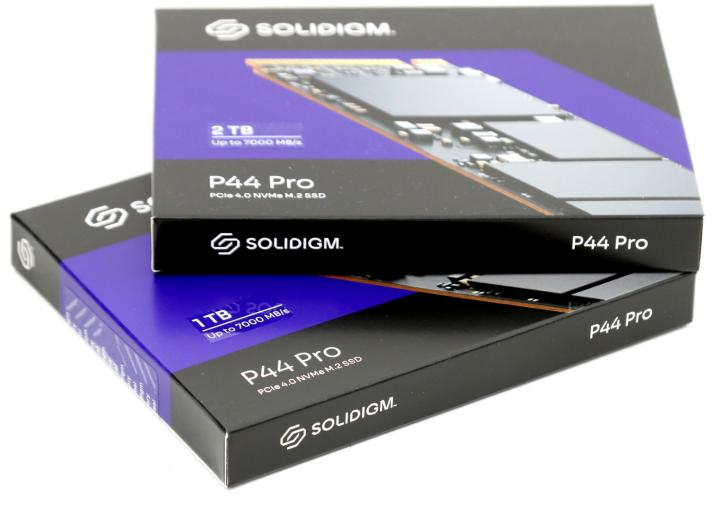Final Words & Conclusion
Final Words & Conclusion
Solidigm might not be the most well-known brand, but if they keep doing what they have done, it will undoubtedly become one of the first names that spring to your mind when it comes to Solid State Storage. Solidigm's P44 Pro is a game changer for a client SSD or any SSD for that matter, and it deserves our highest honour. It is performing beautifully. There is one truth, though, the SSD is physically identical to the SK Hynix Platinum P41 that we tested a while ago. However they're not 100% the same products. Solidigm's P44 Pro employs different firmware and, more importantly in terms of performance, is fully compatible with Solidigm's proprietary NVMe driver. While the standard NVMe driver from Windows works absolutely fast and fine, that last one might be interesting to install as it can bring you 5 to 10% extra performance. You can download it here.
Endurance
So, in terms of everyday PC usage, gaming, and mass (cold) storage, such as your movie and game library, there isn't much to be disappointed in. Nevertheless, potential end-users (such as yourself) will be met with a shiver, as the same shiver that the transition from MLC to TLC NAND elicited, which is lifetime, also known as endurance. To be honest, I wouldn't mind spending an extra $25 for a TLC drive right now, depending on the slight pricing variations between the two options. When you consider things mathematically, though, the picture does change somewhat. For the sake of illustration, consider the submitted and reviewed.
Solidigm offers 750 and 1200 TBW (Terabytes Written) for the 1TB and 2TB models, coupled with an MTBF of up to 1,600,000 Hours (Mean(ingless) Time Between Failures). We already talked so much about MTBF values in the past; what really counts is endurance, the number of times NAND cells can be written before they burst and shatter into small pieces (well, they die and are mapped out, any data present on that cell is written to a healthy one). Bigger volume sizes mean more NAND cells; more NAND cells thus increase endurance. . So how long does a 1 TB storage unit last before NAND flash cells go the way of the dodo? If you are an extreme user, you might be writing 50 GB per day (normal users likely won't even write that per week), but based on that value, 50GB x 365 days= 18.25 TB per year written. So that's close to 82 years of usage, half that for the 1TB SSD. And let me reiterate, writing 50 GB per day is a very eager value.
Thermals
The controller is not fitted with a heatsink or thermal sticker; the controller gets hot but remains colder than most other premium SSDs. Ultimately, it could result in some thermal throttling under an extreme workload. Keep this SSD under a motherboard heatsink; then, this will never not be an issue. We always advise a little bit of airflow over your SSDs, also.
Performance
The P44 Pro is a blazingly fast product. Overall read performance ranges from 3GB to over 6.5 GB/sec. Trace testing revealed that performance was very strong, and access times (latency) were wildly low. you can argue some of the sustained and IOPS workloads, but would you ever notice the difference? The fact remains that between 6 or 7 GB/s is where you're at. The more NAND layers there are, it appears that access times become slower; we've seen the 1TB model often marginally faster than the 2TB model. We're talking milli-fractions of a second here. Bigger volume size SSDs help here because more NAND channels can be utilized.
Concluding
The Solidigm P44 Pro was introduced concurrently with the SK Hynix Platinum P41. Although it shares the same architecture as the P41 (176-layer NAND and an ACNS075 PHC631.00S-1 controller), its firmware offers a slightly different payload. In addition, the 2TB model features an MTBF of 1.6 million hours, an endurance rating of 1,200TBW, and AES 256-bit Encryption with TCC Pyrite Support. Solidigm's P44 Plus is among the best-performing client SSD we have ever tested, and we have tested a lot of them. The P44 Pro's performance numbers are very remarkable, and always near the top of our charts, competing with the best Gen 4 drives. The differences are usually only a few percentage points. The 1 TB and 2 TB versions have only minor performance differences, sometimes the 1TB model being a notch faster even. So, what exactly do we have in Solidigm's P44 Pro? So, as long as Solidigm's proprietary NVMe driver is used, we see a tier-1 performing flash-unit. The application and game trace results are unprecedented for a consumer SSD. Ultimately, and most crucially, the P44 Pro, as it is now priced, is the undisputed price to the performance leader. For give or take 10~11 cents per GB (based on the 2TB model), you get one of the fastest-performing flash-based consumer SSDs. The results of the tests indicate that the Solidigm P44 Pro is a remarkably convincing SSD. The 7000/6500 MB/s continuous read and write performance, and overall results are outstanding.
Recommended Downloads



